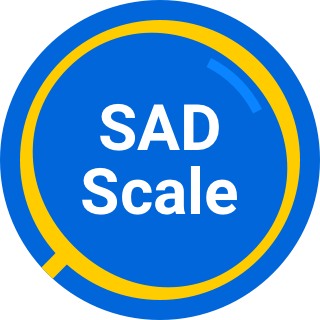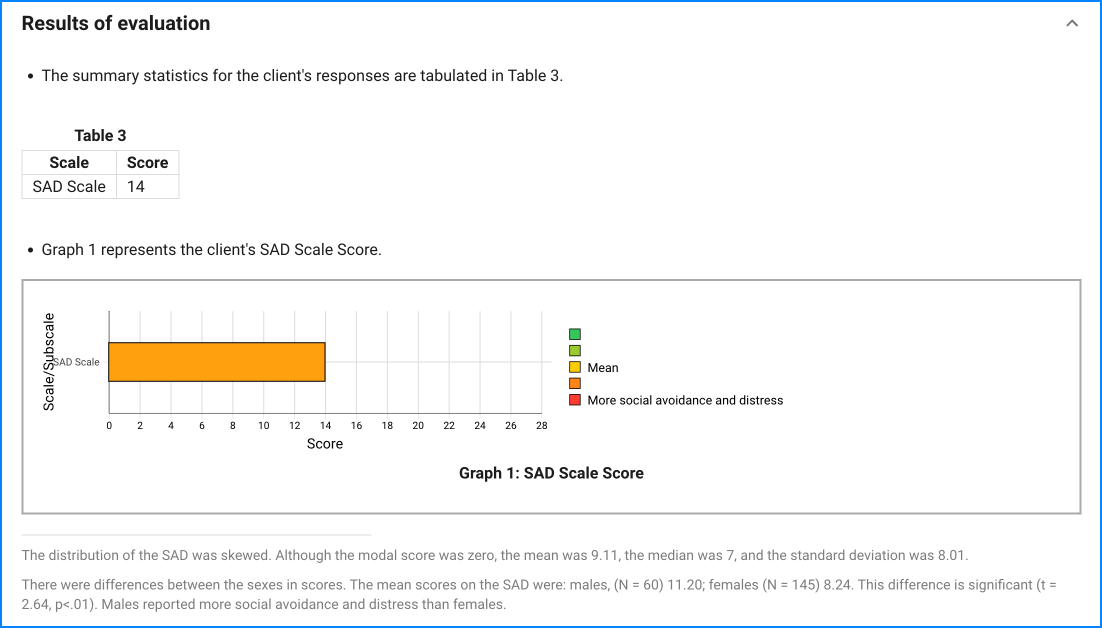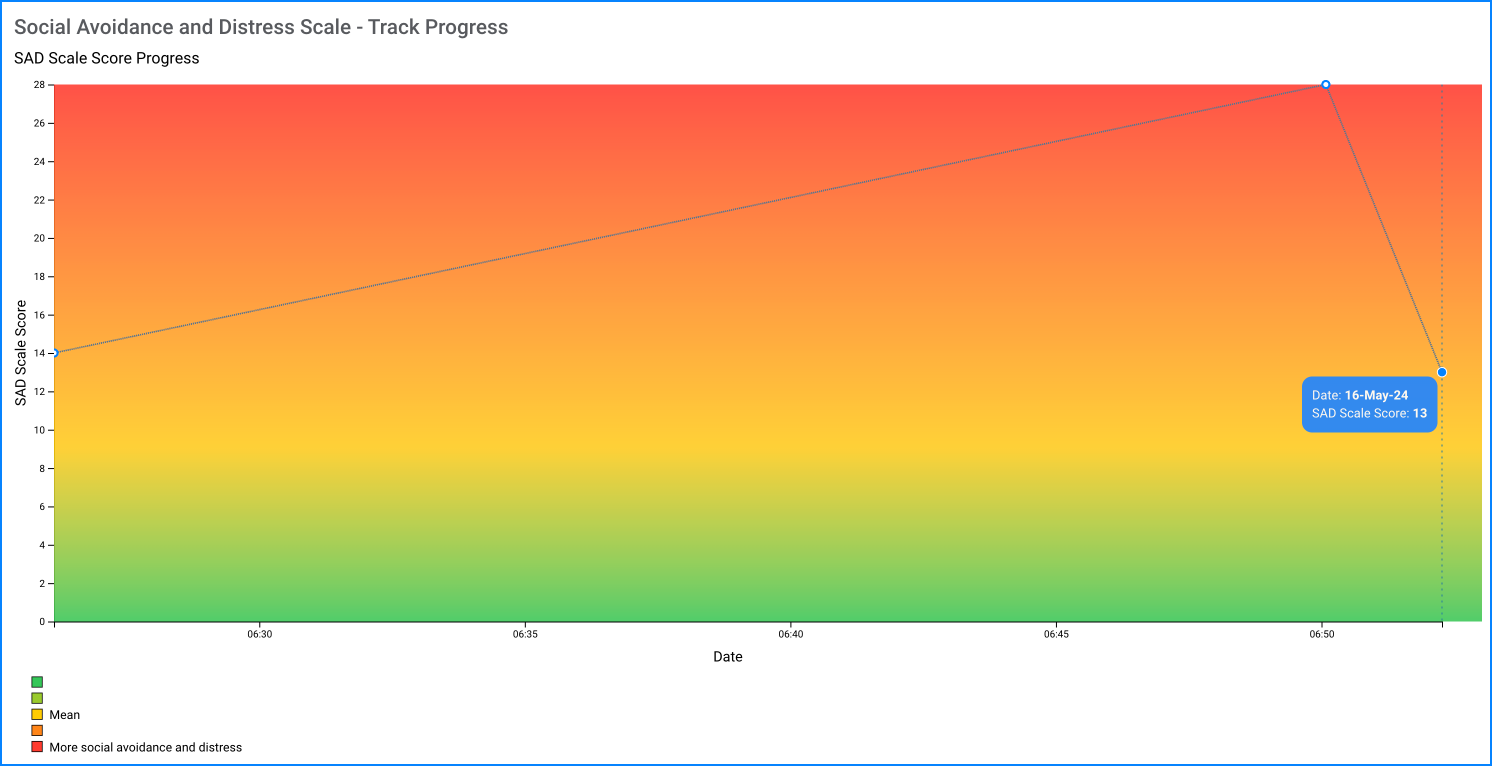The SAD scale has 28 items. The response set in a true-false format.
The SAD scale is evenly divided between true and false items.
Start delivering measurement based mental health care
Conduct psychological assessments remotely, get scores automatically, and maintain clinical records securely
Create account

The Social Avoidance and Distress (SAD) scale is a scale to assess levels of Social Avoidance and Distress (SAD). The SAD scale is divided into two subscales, social avoidance and social distress. Social avoidance is defined as avoiding being with, talking to, or escaping from others for any reason. Social distress is defined as the reported experience of a negative emotion, such as being upset, distressed, tense, or anxious, in social interactions, or the reported lack of negative emotion, such as being relaxed, calm, at ease, or comfortable.
You can create a free account on PsyPack to access fillable PDFs, manuals and educational resources for the SAD Scale
The SAD scale has 28 items. The response set in a true-false format.
The SAD scale is evenly divided between true and false items.
The distribution of the SAD was skewed. Although the modal score was zero, the mean was 9.11, the median was 7, and the standard deviation was 8.01.
There were differences between the sexes in scores. The mean scores on the SAD were: males, (N = 60) 11.20; females (N = 145) 8.24. This difference is significant (t = 2.64, p<.01). Males reported more social avoidance and distress than females.
PsyPack can automatically score the SAD Scale assessment and prepare corresponding tables and graphs.

Further, PsyPack automatically plots a graph to help you easily track progress over time.

Social Phobia, Social Anxiety
The purpose of the evaluation is to:
Self-administered
Clinical
Questionnaire
Students, Adults
About 5 minutes
Since the questionnaire relies on client self-report, all responses should be verified by the clinician, and a definitive diagnosis is made on clinical grounds taking into account how well the client understood the questionnaire, as well as other relevant information from the client.
Watson, D., & Friend, R. (1969). Measurement of social-evaluative anxiety. Journal of Consulting and Clinical Psychology, 33(4), 448–457.